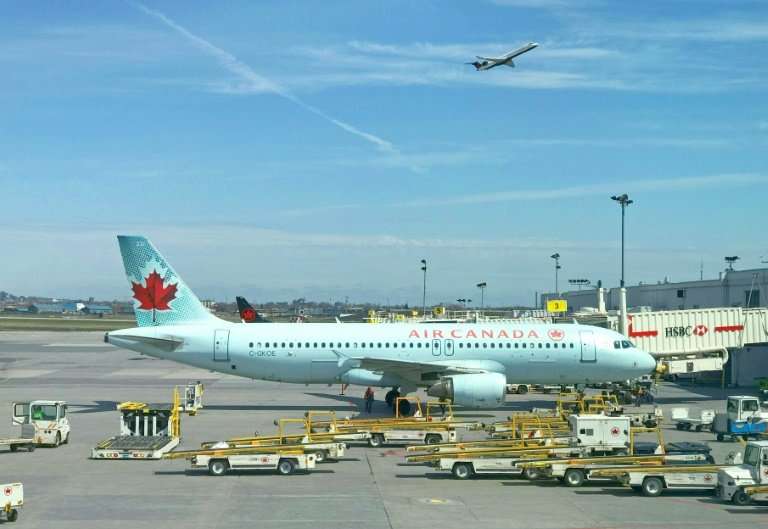Air Canada's near miss last year was almost 'worst accident in history'

A near miss involving an Air Canada plane which almost landed on a crowded taxiway instead of a runway at San Francisco airport last year could have been the "worst aviation accident in history," according to an official report.
The Air Canada Airbus A320 carrying 140 people was cleared to land on Runway 28-Right at San Francisco International Airport shortly before midnight on July 7, 2017—but the pilot inadvertently lined up for Taxiway C, where four planes were waiting to take off.
"Only a few feet of separation prevented this from possibly becoming the worst aviation accident in history," said Bruce Landsberg, vice chairman of the National Transportation Safety Board while announcing the agency's report issued Friday.
"The incident airplane descended to an altitude of 100 ft (30 meters) above ground level and overflew the first airplane on the taxiway," the report said.
"The incident flight crew initiated a go-around, and the airplane reached a minimum altitude of about 60 ft and overflew the second airplane on the taxiway before starting to climb," it added, noting none of the five flight crewmembers or 135 passengers aboard the Air Canada plane were injured.
The report said the flight crew's misidentification of the taxiway as the intended runway "resulted from the crewmembers' lack of awareness of the parallel runway closure due to their ineffective review of notice to airmen (NOTAM) information before the flight and during the approach briefing."
Other contributing factors were "the flight crew's failure to tune the instrument landing system frequency for backup lateral guidance, expectation bias, fatigue due to circadian disruption and length of continued wakefulness, and breakdowns in crew resource management."
An audio recording of the radio exchanges between air traffic control and the pilot of Air Canada flight 759 was posted online shortly after the incident.
Just moments after receiving permission to land on the designated runway, the Air Canada pilot returned to the radio sensing that something was amiss.
"Uh, Tower, I just want to confirm—this is Air Canada 759—we see some lights on the runway there, across the runway, can you confirm we're clear to land?"
The tower responded: "Air Canada 759 confirmed clear to land Runway 28-Right. There is no one on 28-Right but you."
"OK, Air Canada 759," the pilot replied.
An unidentified man's voice then broke in—presumably a pilot in one of the aircraft waiting to take off. "Where's this guy going? He's on the taxiway," he said.
Air traffic control immediately told the Air Canada pilot not to land.
"Air Canada go around," the tower said.
"In the go-around, Air Canada 759," the pilot responded.
The pilot of a United Airlines plane on the ground told the tower meanwhile that "Air Canada flew directly over us."
"Yeah, I saw that guys," the tower replied.
© 2018 AFP



















